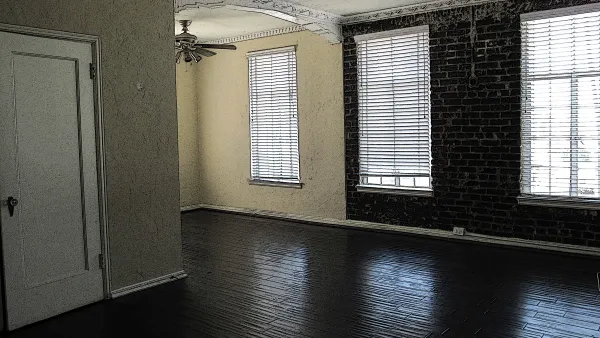Millions of people who live in manufactured homes were already vulnerable. The pandemic has made their housing situations even more precarious.

Jung Hyun Choi and Laurie Goodman write about the impact of COVID-19 on people living in manufactured housing, 7 percent of U.S. households. "These 22 million renters and owners tend to have lower incomes and work in industries that are vulnerable to the pandemic, yet these households mostly fall outside the protections offered by the Coronavirus Aid, Relief, and Economic Security (CARES) Act."
Owners and renters of manufactured homes make up a higher percentage of workers in the industries hardest hit by the pandemic—food and accommodation, retail, construction, entertainment, and other services—compared to owners of single-family homes and other renters. They also have lower incomes than homeowners and other renters.
"Despite their greater vulnerability, most owners of manufactured homes do not qualify for CARES Act forbearance relief, because 77 percent of all new manufactured homes are titled as 'personal property' rather than 'real estate.'" For owners who are able to get forbearance on the "chattel loans" of manufactured homes, the repayment terms are generally less favorable than those for federally backed mortgages.
"Renters also did not receive immediate relief. The CARES Act eviction moratorium, which expired July 24, did not apply to most renters in manufactured homes, with two exceptions: the manufactured home parks financed with federally backed mortgages (2,400 out of 45,000) and the few investor-owned properties with federal loans," note Choi and Goodman.
FULL STORY: 22 Million Renters and Owners of Manufactured Homes Are Mostly Left Out of Pandemic Assistance

National Parks Layoffs Will Cause Communities to Lose Billions
Thousands of essential park workers were laid off this week, just before the busy spring break season.

Retro-silient?: America’s First “Eco-burb,” The Woodlands Turns 50
A master-planned community north of Houston offers lessons on green infrastructure and resilient design, but falls short of its founder’s lofty affordability and walkability goals.

Delivering for America Plan Will Downgrade Mail Service in at Least 49.5 Percent of Zip Codes
Republican and Democrat lawmakers criticize the plan for its disproportionate negative impact on rural communities.

Test News Post 1
This is a summary

Test News Headline 46
Test for the image on the front page.

Balancing Bombs and Butterflies: How the National Guard Protects a Rare Species
The National Guard at Fort Indiantown Gap uses GIS technology and land management strategies to balance military training with conservation efforts, ensuring the survival of the rare eastern regal fritillary butterfly.
Urban Design for Planners 1: Software Tools
This six-course series explores essential urban design concepts using open source software and equips planners with the tools they need to participate fully in the urban design process.
Planning for Universal Design
Learn the tools for implementing Universal Design in planning regulations.
EMC Planning Group, Inc.
Planetizen
Planetizen
Mpact (formerly Rail~Volution)
Great Falls Development Authority, Inc.
HUDs Office of Policy Development and Research
NYU Wagner Graduate School of Public Service





























